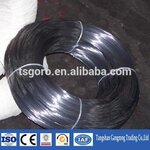btahir90
Junior Member level 2

Hello!
Dear All, I am Planing to make a toroidal transformer but Silicon iron sheet is costly here in my area, Can i use Soft iron Wire (bare without insulation) to make a toroid shape and start winding on it.
What if i use some varnish on iron wire before making a toroid core to reduce eddy current.
how much power loss i can save by using a varnish coating on bare iron wire.
Attached is an image for the reference.

Dear All, I am Planing to make a toroidal transformer but Silicon iron sheet is costly here in my area, Can i use Soft iron Wire (bare without insulation) to make a toroid shape and start winding on it.
What if i use some varnish on iron wire before making a toroid core to reduce eddy current.
how much power loss i can save by using a varnish coating on bare iron wire.
Attached is an image for the reference.

Last edited:


